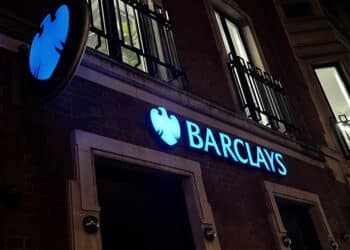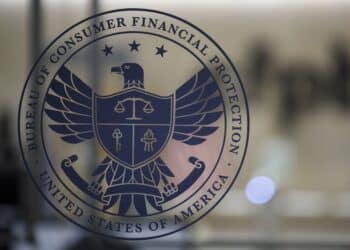Should Banks White-Label Bitcoins?

Mt.Gox declared bankruptcy today, leading to widespread fears about the security of other bitcoin exchanges.
Could banks step into the breach? Could banks even release their own brands of virtual currencies?
In the early days of paper money, banks issued their own notes. (See left.) But as time went on, currency became increasingly centralized, issued almost exclusively from central governments — and then along came bitcoins, famously decentralized and backed only by the will of bitcoin users.
But history has a way of traveling full-circle and now an analyst, digital finance consultant, Larry Smith, is speculating that banks themselves might look to issue their own cryptocurrencies. Smith believes that cryptocurrencies will have wide application across business and culture, including both banking and online advertising.
For banks, Bitcoin is “just a new source of money,” he suggests. “Banks are very hungry to advance their value through technology.” It’s easy to imagine, say, HSBCoin, or BarclaysBucks, giving investors who want choice in the currencies they use the services of a trusted financial brand.
And why not? JPMorgan Chase made waves when a patent application involving a proprietary virtual currency, seemingly first filed in 1999, emerged online last December. (We reported this here.) The best suggestion for the name of the currency was “Dimons.” Yes, that was a snare drum you just heard.
Bitcoin advocates have long dreaded regulators getting hold of the currency, but newly minted (sorry) Federal Reserve Board Chair Janet Yellen, laid these fears to rest yesterday, saying, “To the best of my knowledge, there’s no intersection at all in any way between bitcoin and banks the Federal Reserve has the ability to supervise or regulate.” She was responding, in part, to the urging of senator Joe Manchin (D., W.Va.) who has asked the Fed to “ban bitcoin.”
Before Yellen spoke, Javelin Senior Analyst Nick Holland characterized the Fed as being “fairly positive toward virtual currencies.” The caveat emptor ethos of the bitcoin buyer, furthermore, meant that bitcoin users were comfortable being unregulated. Banks, being highly regulated entities, would seem to be in fundamental conflict with an unregulated currency such as bitcoin.
Julie Conroy, senior analyst at Aite Group, the consultancy, believes banks “are going to stay on the fringes [of bitcoin] a while longer. [Anti money-laundering] provisions around bitcoin are pretty rigorous, so to do more would be inviting more scrutiny.” What the Fed and regulators generally doing with bitcoin, Conroy said, is to regulate “the touchpoints where bitcoins meet banks.” Moving from virtual currencies to fiat currencies requires money services licenses, and following AML rules. This, Conroy says, is the right way to play it at this point.
Banks in Europe are beginning to set up currency exchanges where fiat currencies and virtual currencies can be exchanged in a bank-supervised environment. The U.S. may not be there yet, but with reason and restraint from both the Fed and banks, when the bitcoin hysteria following the implosion of Mt.Gox dies down, banks will return to a wary status quo, watching and waiting.
Learn more about what’s next in banking at Bank Innovation 2014 on March 3-4 in Seattle. Request an invitation here.











